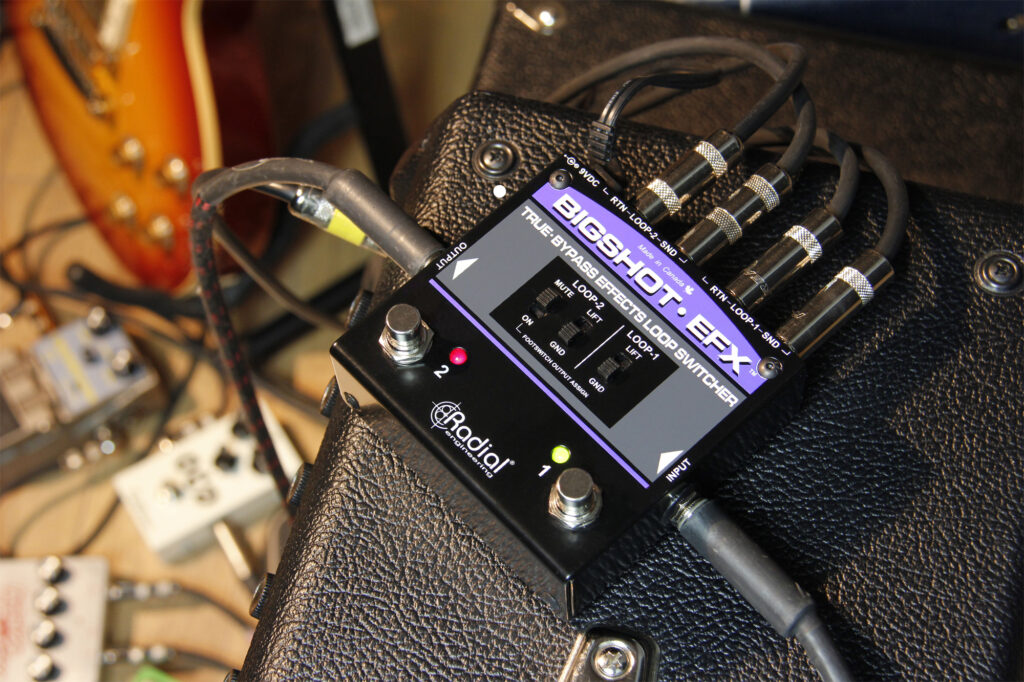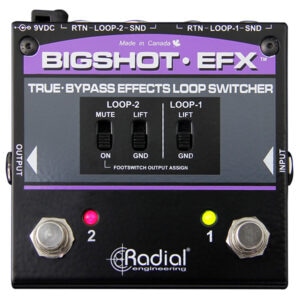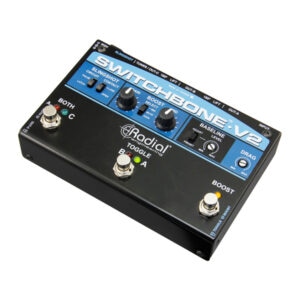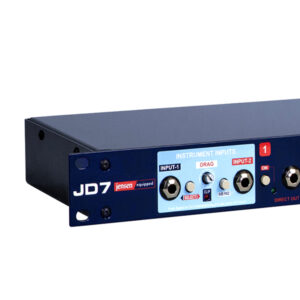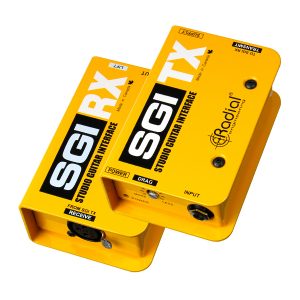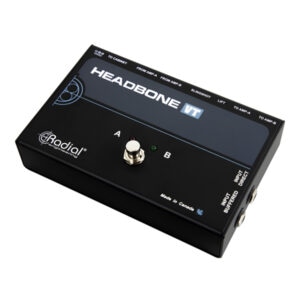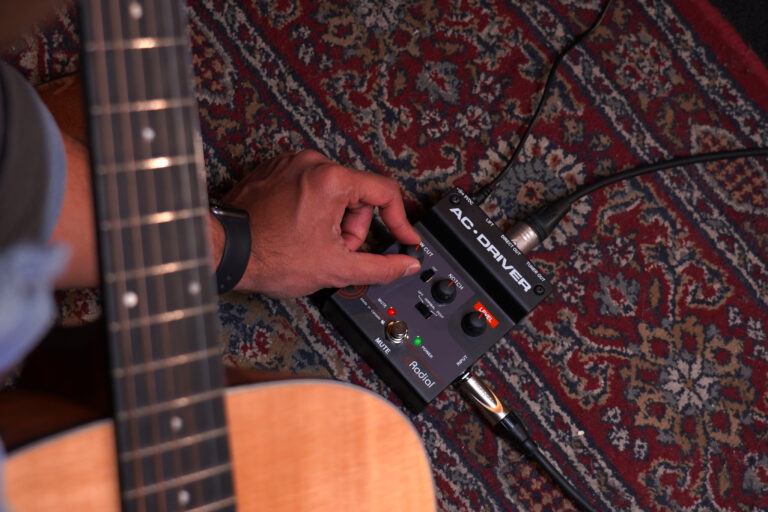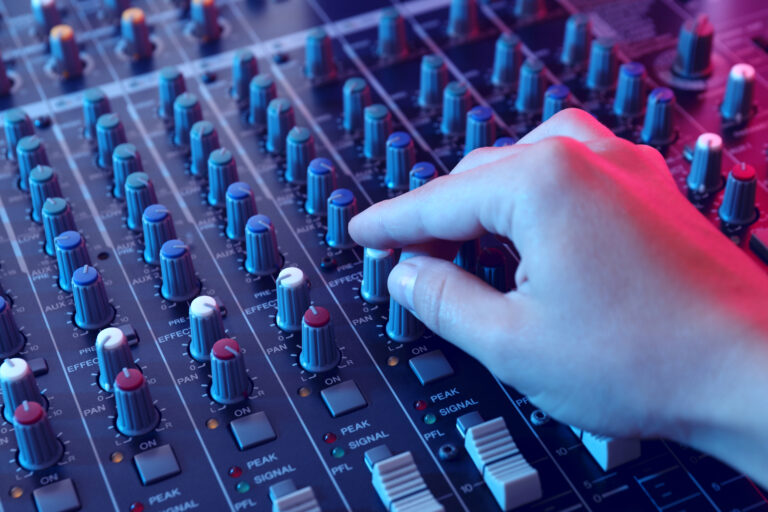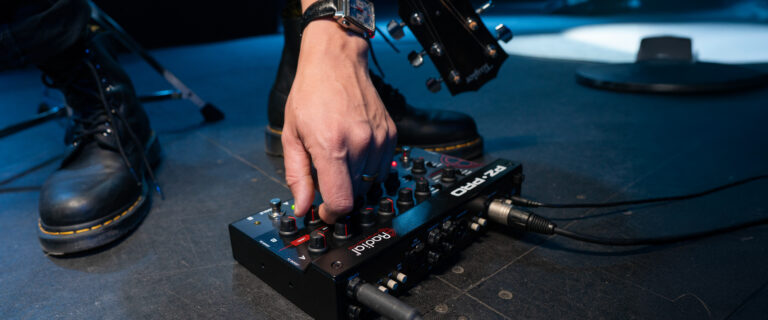True bypass, often referred to when discussing effects pedals, can be thought of as a straight wire connected from the input to the output of a pedal. With a true bypass pedal, when the pedal is in bypass mode (off), the guitar signal is routed directly to the guitar amplifier without any of the interference, loading, or buffering effects that are often caused by the pedals that are in-between.
The easy way to check if a pedal is true bypass is to disconnect the power and see if the guitar signal passes through the pedal when the effect is off. Make sure you toggle the on/off footswitch so that it is set to off or bypass.
The concept is simple: true bypass pedals connect the instrument directly to the amp bypassing the effects’ circuits so the original tone of the instrument is retained and you enjoy better feel. The question therefore arises: if true bypass pedals are better, why aren’t all pedals true bypass? Well, the answer is complex and is often a trade-off.
Most pedals are NOT true bypass because in theory, true bypass pedals are great but in practice they often introduce problems of their own. For instance, true bypass pedals are notorious for switching noise. This is most audible when playing with high gain or distorted amp tones.
With pedals like a chorus, delay, or reverb, the input buffer is the circuitry that is needed to drive the signal into the effect chip that makes it work. A buffer is in fact a preamplifier. Buffers are used EVERYWHERE in audio where a signal is driven with a power source. The battery-powered built-in preamp in your acoustic guitar is a buffer. Your active bass is driven with a buffer. The input to your mixer or audio interface is buffered. And all effects pedals from wahs to fuzzes employ buffers to make them work. Turning these pedals on or off usually introduces a popping transient when the circuit is charged that can be very loud. So the way around the problem is to never turn the buffer off. Pedals like these are buffered and therefore not true bypass.
Buffers have several advantages: You can drive longer cables with less noise, have a tuner connected with less interaction, and loading no longer becomes a problem as you gang a bunch of pedals together. So clearly, buffers are great, right? No, not necessarily. Buffers introduce another problem: you no longer are connected to your amp. Your signal is now active or buffered and invariably the buffer alters the tone of your guitar! The quality of the buffer becomes a major issue.
So what is the solution?
It comes down to making choices. If you are a tone nut and want true bypass performance as if you are connected directly to your amp, then you need to make sure all of the pedals you are using are true bypass. Be prepared to live with some switching noise. When you connect devices like a tuner to the circuit, the tuner will immediately load down your pickup and thin out the tone. And of course, forget about using a chorus or reverb in-line as these will almost certainly be buffered and not true bypass.
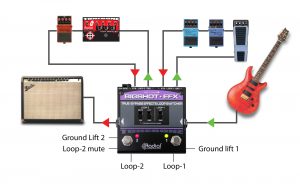
A good option would be to connect an effects loop selector like the BigShot EFX® to your pedalboard. This simple device lets you connect a bunch of pedals in two separate loops and bring them into your guitar signal path when you need them. This way, tone-robbing pedals–or those old vintage devices that sound great but are noisy—can be used only when needed, then completely taken out of the circuit to remove any negative side effects.
But what about long cables, noise, and driving more than one amp?
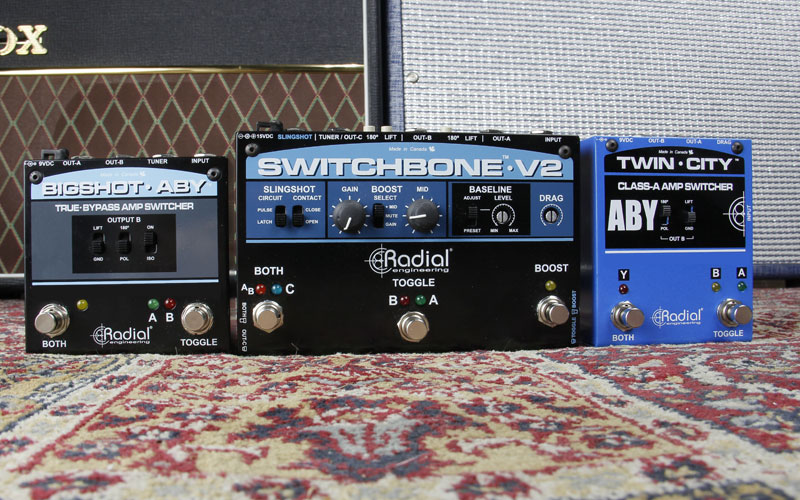
Well, this is where buffers come back into the picture. Without a buffer, each time you introduce another pedal or a cable, more noise gets into your system. This is because guitar pickups are high-impedance devices that are particularly susceptible to noise from power transformers, LCD screens, power cables, and stage lighting. Furthermore, if you extend a high-impedance cable more than 20′, the tone of the instrument will change due to the capacitance of the cable and, of course, more noise will enter the circuit. Then there is the strength of the guitar signal itself. If the guitar signal is divided in two to drive two amps or into three when you add a tuner, the tone will be severely altered.
The ONLY solution to circumvent these problems is to introduce a buffer. But wait a minute… Buffers sound bad, do they not? Actually, it depends on the quality of the buffer and this, once again, comes down to making choices.
Thomas Nordegg (guitar tech to Frank Zappa, Steve Vai) and Pete Thorn (guitarist with Chris Cornell, Melissa Etheridge, etc.) discuss true bypass and buffered guitar effect pedals, cable length and the effect they all have on your tone.
Most pedal manufacturers employ pre-packaged ICs (integrated circuit chips) to buffer their signals. These class-B chips are wonderful because they are designed to be extremely efficient, quiet, and very compact, making them perfect for pedals that employ 9V batteries that would otherwise quickly run dead. These chips are also really cheap! This reduces manufacturing costs and best of all, because they are really easy to use and come with great application manuals from the same guys that make cell phones, anyone with basic electronic knowledge can use them.
Only one problem… They sound bad.
Why? Well, guitars are not buffered sources like an iPad. Guitars are musical instruments. They breathe and spit and bark and cry. They are alive. As soon as you connect a cheap, off-the-shelf IC in between the pickup and the amp, the instrument becomes detached. It just is not the same. It is the way that the guitar reacts to the circuit that completes the instrument.
For a buffer to work, you have to treat the guitar as if it is seeing the world’s best guitar amplifier. Products like the Switchbone®, for example, use a unique class A circuit that has been optimized for guitar.
It is worth noting that Class-B buffering chips divide the signal into two halves whereby the positive and negative portions of the signal are amplified separately and then recombined at the output. This yields much greater efficiency and less noise, but the trade-off is the introduction of zero-cross distortion as the two halves are brought back together. Zero-cross distortion causes phase distortion and intermodulation distortion, which are primary contributors to bad sound.
As any tone nut or audiophile knows, the preferred method is to use a single amplifying device to do the job. This is known as a Class-A buffering circuit. Unfortunately, because Class-A circuits never shut off, they are very inefficient and draw a lot more power. This makes them impractical for 9V supplies as they need more power to achieve sufficient headroom. Furthermore, unless they are designed very carefully, they are much more prone to noise, which, as you know by now, is a major concern with high-impedance guitar circuits.
The cool thing is that because we are dealing with guitar signals, we do not care about being efficient. Our only goal is great sound. This is why we use 100% discrete (real resistors and capacitors–not IC chips) to make our Class-A circuits. To get even closer to the real thing, we invented a cool function called DRAG control that actually allows you to dial in the perfect load so that your guitar feels like it is connected to a 20′ guitar cable. You get the benefit of less noise, you get longer cables, and you can drive multiple amps without the level dropping. And your tone always remains your tone.
To learn more about ABY Switchers, True Bypass and Transformer Isolation. Check out this video:
This is why tone fanatics like Aerosmith’s Joe Perry use Radial products in the studio and for live touring. Joe uses several amps on stage and Radial devices like the JD7 Injector®, SGI TX/RX® Studio Guitar Interface, and Headbone® Solid State Head Switcher in his rig.



